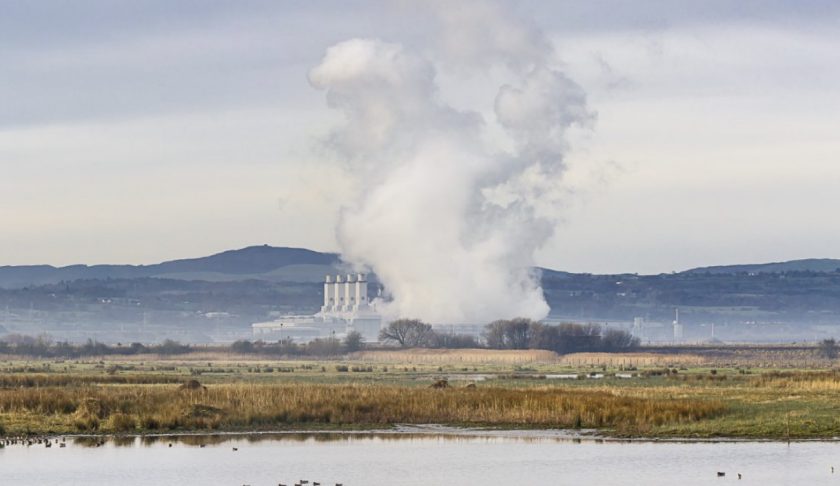The story of Connah’s Quay Power station

Connah’s Quay Power Station is located on the south bank of the River Dee and has become a familiar landmark for nearby communities.
The current gas-fired power station was commissioned in 1996, although electricity generation activities have been operated on the land as far back as 1954, when it was originally home to a coal-fired plant.
The changes the site has seen since those early days are testament to the ongoing evolution of how Britain’s energy needs are met.
One constant throughout the years, has been Connah’s Quay’s close links with its locality, whether through fuel-source or the locally-based pool of skilled professionals, along with connectivity to existing transport, energy distribution and building infrastructure.
In today’s energy landscape, Connah’s Quay has a vital role to play, efficiently and flexibly providing reliable energy – when the sun isn’t shining, and the wind isn’t blowing.
The story of energy at Connah’s Quay is one of adaptation, evolution and flexibility – a journey from coal to gas, and from constant 24 hour supply to agile response.

Supporting the UK’s energy transformation
Supply security is as essential as ever in a world where the drive to decarbonise and provide cost-effective solutions continues apace.
Variable demand and the intermittent supply from renewable power sources require agile and adaptable energy provision.
Thanks to engineering ingenuity and capital investments geared towards reliability, flexibility and efficiency, Connah’s Quay can now be activated at short notice and its output scaled up or down as necessary to smooth out peaks and troughs in the energy system.
Continued advancements in technology and innovative solutions will potentially provide a new way to meet the challenges of intermittency, storage and delivery of Britain’s energy needs, when and where needed.
In the near-term, gas-fired power stations like Uniper’s Connah’s Quay CCGTs (Combined cycle gas turbine) plant offer a tried and tested, cost effective, and flexible way of helping ensure we can keep Britain’s lights on.

A carbon neutral future
The UK and Welsh Governments’ commitments to net zero emissions by 2050 require at-scale production and distribution of new, clean energy sources such as hydrogen.
The Connah’s Quay site has huge potential as an energy hub that can support the decarbonisation visions of both the Welsh and UK governments, providing the right combination of expertise and location to manage low-carbon hydrogen production.
The plant is close to the Hamilton offshore gas fields; ideal for storing carbon captured from the production of blue hydrogen.
And as part of the Western HVDC Link and with local connections onto the 132kV network, it could also produce green hydrogen by connecting to renewable electricity from Welsh and Scottish wind farms.
The hydrogen generated could then be used to decarbonise heavy industry, transport, heating and power.
Nearby road and rail links mean that the site could even lend itself to providing refuelling facilities for hydrogen-powered trains or buses.
And its location, on the route of the new carbon sequestration and hydrogen transmission pipelines proposed under the Hynet project, opens up the possibility of connecting north Wales and the north-west of England.
This would open up the hydrogen infrastructure and the potential hydrogen storage fields such as Uniper’s Holford gas storage facility in Cheshire, ensuring an integrated and flexible net zero emissions future.
Uniper says its experience in gas operations and Connah’s Quay’s proximity to Deeside Industrial estate, “also creates opportunities to host and operate hydrogen distribution and / or blending facilities, expanding the reach of such future hydrogen networks.”
“Its strategic location and existing infrastructure offer the perfect foundations for such a hub to flourish in the decades ahead.”
“This next stage of development will also reaffirm the site’s importance to the local community.”
“About 60 highly skilled Uniper employees and 30 regular contractors work at the site, with most living within a 25-mile radius.”
“With adaptability embedded in its DNA, the power station, with its experienced and skilled workforce, has served the UK’s energy system for decades and evolved to adapt to contemporary demands.”
“Uniper has pledged, in its strategy, to make its European power generation portfolio climate-neutral by 2035. With clean hydrogen technology as a cornerstone of its new strategy, Connah’s Quay is well placed to play its part in Uniper’s and the UK’s future hydrogen story.”
Taken from Uniper’s own blog.
Feature Photo: RSPB Burton Mere Wetlands/P.Jubb
Latest News









